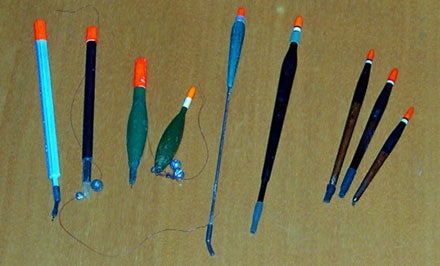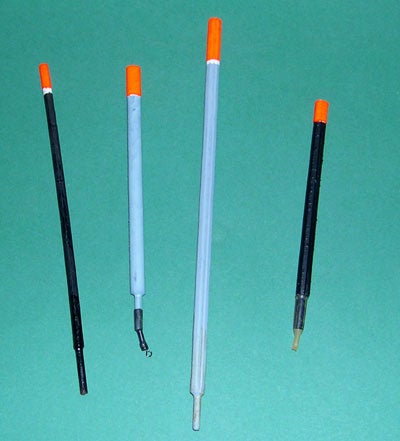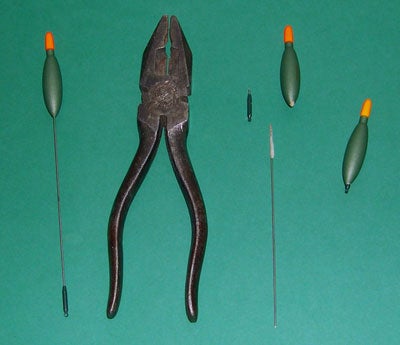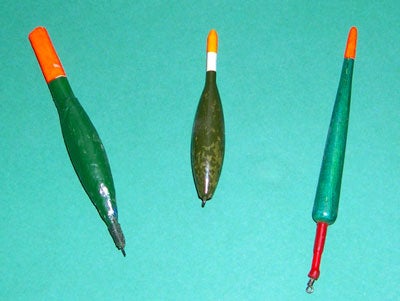| MARK WINTLE |
| Mark Wintle, an angler for thirty-five years, is on a quest to discover and bring to you the magic of fishing. Previously heavily involved with match fishing he now fishes for the sheer fun of it. With an open and enquiring mind, each week Mark will bring to you articles on fishing different rivers, different methods and what makes rivers, and occasionally stillwaters, tick. Add to this a mixed bag of articles on catching big fish; tackle design, angling politics and a few surprises. Are you stuck in a rut fishing the same swim every week? Do you dare to try something different and see a whole new world of angling open up? Yes? Then read Mark Wintle’s regular column. |
| The Challenge of Shallow Water For a keen river angler, the ability to float fish shallow water is a useful skill. My local rivers have plenty of shallows, and sometimes this is where the fish are to be found. I’m going to explain the problems associated with floatfishing on this type of water and how to solve them using specialist floats that will do the job.
So what should I define as shallow? And what are the problems associated with fishing such water? What sort of fish might be found there? What’s Shallow? I’d define shallow as less than three feet deep; mostly it will be between two and three feet, but occasionally I find fish in much less than this, and have caught in less than a foot of water. Shallow water generally has some pace on it which is partly why it is holding some fish. Why is floatfishing problematic? Shallow water can hold a lot of fish but catching a lot is not always simple. It is easy to disturb the fish so just approaching the water has to be done with stealth and light footsteps. The actual casting has to be delicate, and playing the fish requires care to avoid disturbing the fish even more. And the shallow water makes striking tricky in that a firming tightening to set the hook is required rather than powerful strikes to prevent the tackle flying out of the water. The very shallowness of the water dictates that float rigs that would work in much deeper water are likely to be too clumsy or tangle-prone. At the same time, there is a need to try to achieve good bait presentation to fool the fish. Fortunately, there are some types of float that will the job admirably, and I will come onto these later.
What species are likely to be found in this type of water? The most likely species to be found in shallow water are dace and chub, followed by grayling. To a lesser extent roach may be present. I have had some good dace on this type of water, and it is fair to say that the extra challenge of fishing shallow water makes dace fishing worthwhile in the circumstances. Catching dace from “easy” swims can be monotonous, and I’m afraid that unless there is some sort of challenge involved I can no longer be bothered with just trying to see how many pounds of dace I can accumulate. As for the chub, what you find varies greatly from chublets, “pups” as we used to call them (fish of a pound or two) to proper chub, and they’re all great fun in this kind of swim. The presence of grayling depends very much on the water; certainly there are more about on the Hampshire Avon these days, and they are often found in this shallow water though not always. On the Stour this is one of the few places that they can be found on the middle river around Wimborne. Roach are much more hit and miss in shallow water. There are sometimes plenty, and even the chance of a good one but they are easily spooked. As for bream, barbel, perch….sometimes. Floats for shallow water – top and bottom If the water isn’t too shallow, say two feet deep or more, and conditions are favourable; fishing at close range and the wind isn’t tricky, then there is a good chance that you will be able to use a float attached top and bottom. Strong candidates are a small stick float or a small balsa float. One type of float that I have found especially useful is a small John Allerton alloy stem stick taking 4 x no. 4 shot. These are stable floats and, provided care is taken in casting, useful in achieving a degree of control and therefore better bait presentation. I have even found that the bulk of the shot, say two of the no. 4 shot load can be placed immediately under the float with the remainder of the shot load split into no. 8 shot that is spread down the line.
Floats for shallow water – bottom end only One very useful float for this type of swim is a short waggler float. The simplest form is three or four inches of peacock quill with a cane peg to attach a float adapter. These are easy to make and easy to fish with. Depending on the thickness and length of the float the shotting capacity can vary from 2 x no. 1 to 5BB which gives plenty of versatility, and I wouldn’t be without a selection of floats like this. There are commercially available alternatives; small crystal wagglers and unloaded Puddle Chuckers from Drennan are worth looking at. One variant that is tricky to make but has its uses is a shaped bodied waggler made from three inches of thick peacock quill and Styrofoam.
Leaving the best till last, we have the Trent Trotter, invented by Billy Lane when he was attempting to fish an exceptionally shallow swim on the Trent with a small cork and crowquill Avon float. He broke the stem, and suddenly realising that by attaching the remains of the float by the remnant of the stem below the body he had a useable float went on to conquer the swim. He developed the float from there and for many years these were commercially available from Ultra floats though I doubt that is still the case. This float consists of a small body with a short tip, and is fished bottom end only. It can be cast a fair distance, perhaps twenty yards, and is probably the one of the few that can tackle really shallow water. The bottom end attachment helps to eliminate tangles. The bulk of the weight is around the float with just two or three no. 8 shot down the line. A short cut to a Trent Trotter I have no problem making my own floats, whatever the pattern, but I can suggest a short cut to obtaining a Trent Trotter. Take a wire stem Drennan Avon, 5 x no. 4 model. Hold the body of the float in your left hand, firmly but taking care not to damage the balsa, and the stem with a pair of pliers. Pull steadily and the stem will come out. Cut the wire stem so that you have the end eye part and half an inch of wire. Coat this with araldite and push it back into the hole in the base of the float so that the eye is just protruding. Give the whole float a coat of varnish (I think all the Drennan balsa floats need this nowadays as they seem to crack far too easily), and you’ve got yourself a fine Trent Trotter. Conclusions I’ve concentrated on floats and suggested some shotting patterns. Feeding tends to be little and often with either maggots or casters. The rest of the tackle is simple stuff; a light match rod, a small fixed spool reel loaded with 2lb line, possibly slightly heavier if expecting chub, the line sprayed to float. Hooks vary from 20s to 16s; I’d probably choose size 18 Drennan Carbon Chubs as the most versatile hook for this type of fishing. Above all, be prepared to experiment with this type of fishing. I’ve got it wrong many times, had tangles galore, chosen the wrong type of float, scared the fish etc, but it has never put me off trying. And when it does come together then it is all worthwhile. |


















